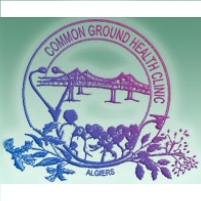Post-Katrina Health Clinics More Efficient than General U.S. Health Care
Thursday, January 21, 2010

Some good may have come out of the devastation that hit New Orleans after Hurricane Katrina. Although the city’s health care system took a beating from the storm and subsequent flooding, a new network of clinics has sprung up—and is now providing a level of care that exceeds patient ratings for the entire country.
As a result of the flooding in 2005, the Medical Center of Louisiana at New Orleans, the city’s large hospital system, was closed for 14 months, and another major facility, the Charity Hospital building, has never reopened. The total number of hospital beds in New Orleans was cut in half, and doctors by the thousands fled the city.
Since then, more than 90 independent, neighborhood primary care clinics have opened, thanks to funding from federal, state, and local sources. A survey of patients at 27 of the new clinics was performed by The Commonwealth Fund, which found: “most patients reported having easy access to care, helpful communication with clinicians, good management of their chronic illnesses, and preventive care,” according to the organization’s report.
Patients also reported fewer problems stemming from getting test results or doctors ordering tests, in comparison to national complaints. For example, 17% of the general public reported delays in learning about abnormal results of tests, but only 5% of clinic patients had a similar problem. In the nation at large, 19% of patients found that test results or medical records were not available at the time of a scheduled doctor’s visit, but among clinic patients, only 4% complained about this problem.
-Noel Brinkerhoff
Coming Out of Crisis: Patient Experiences in Primary Care in New Orleans, Four Years Post-Katrina—Findings from The Commonwealth Fund 2009 Survey of Clinic Patients in New Orleans (Commonwealth Fund)
Coming Out of Crisis (Commonwealth Fund) (pdf)
- Top Stories
- Unusual News
- Where is the Money Going?
- Controversies
- U.S. and the World
- Appointments and Resignations
- Latest News
- Trump to Stop Deportations If…
- Trump Denounces World Series
- What If China Invaded the United States?
- Donald Trump Has a Mental Health Problem and It Has a Name
- Trump Goes on Renaming Frenzy






Comments